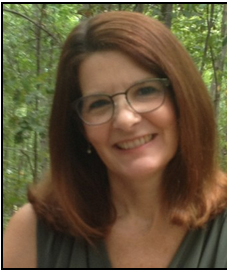You finished writing your book, begged an avid reader to give you some input, and made revisions. Are you ready to submit it to a publisher or publish it yourself? Maybe, but probably not. Even if your friend is an avid reader and/or writer, you may want to hire a professional editor before you take either step.
Although publishing houses have their own editors who will edit your book after you’ve signed a publishing contract, the competition in the publishing world is so extreme that you want to be sure you put your very best product in front of them. You rarely get a second chance. If you plan to self-publish, you definitely want input from someone who can spot not only errors but also weaknesses.
You first need to determine what your manuscript needs.
- Developmental editing means looking at the story as a whole—the characters, the plot, and the way in which the story is told.
- Line editing examines each sentence to ensure the use of active (versus passive) verbs, proper sentence construction, and punctuation. However, a line edit also evaluates your use of words. Does your writing draw readers in? Do you maintain tension and interest? Or are your words too passive and overly descriptive? Do you wander off on tangents to the point you lose the reader?
- Copyediting catches minor errors, such as punctuation and verb tense errors.
- Proofreading is the final pass, looking for typos. Proofreading is critically important if 100,000 copies of your book are being printed and shipped to bookstores. However, many books are now done in small batches of “print on demand,” so minor errors can be fixed before the next batch of printing.
Edits are done in the order listed above. Developmental is looking at the overall work. After fixing the big issues in plot, intrigue, believability, and characters, you are ready to look at the actual writing, which is line editing. Once the writing is up to par, a copyeditor reads through to smooth out grammatical errors and punctuation. The proofreader reviews the final draft before it goes to print, looking strictly for typos.
Plot and characterization are the two biggest issues in any story, which is why you want the developmental edit first. An excellent plot is obviously necessary. However, a good editor also critically evaluates if the characters are well-developed. Will a reader feel they know your characters? Do they have any unique attributes that separate them from other characters? Are any of them memorable? (Sometimes a really great character can push an average story to stardom.)
Even in nonfiction, the arrangement of information can be critically important.
I have been on both ends of the game—I am an award-winning author with seven novels published, as well as numerous articles and a decade-long weekly humor column, but I have also spent decades teaching writing workshops and working as a freelance editor. Although many editors concentrate on one type of editing, I do a combination of developmental and line editing. I provide editing comments throughout the manuscript explaining errors and suggesting what needs to be done. Some editors specialize in one genre, while an editor with broad experience may edit a range of different genres.
Proofreading is a special skill.
A proofreader must have an eagle eye, looking at every single word and period.
The temptation is always to just get your dear Aunt Sally to give it a look-see. However, if she reads romances and you ask her opinion on your dystopian, you likely aren’t going to get the critical feedback you need. Likewise, don’t take advice willy-nilly from random writers. Read their work and discuss your story before you hack away at your prose based on their opinion. Random writing groups can destroy good manuscripts.
Style Guides
Most American book publishers use Chicago Manual of Style (CMOS) as their directive on punctuation, but there are a few American publishers that use Associated Press style guidelines (AP). The differences are minor but distinct. Most websites, newspapers, and magazines use AP.

Michelle Buckman is a freelance editor of both fiction and nonfiction and the award-winning author of seven novels. She is also an international conference speaker renowned for her dynamic discussions on writing and faith. She has been a featured author at numerous conferences and events, including the Catholic Marketing Network trade show, International Christian Retail Show, Southeastern Independent Booksellers Association, and the South Carolina Book Festival. Connect with Michelle Buckman






2 Comments
Hello Michelle,
I wanted to ask something if you don’t mind.
Does developmental editing remove factual errors too?
For example, say, I’ve written,” He plucked a ripe mango from a nearby tree.” By the way, my setting depicts a winter in India when the mango season has not still arrived.
Will the developmental editor correct that?
Thanks and regards.
A developmental edit concentrates on strengthening the overall plot and character development. Although a developmental edit examines the plausibility of certain scenes and situations, your example is one sentence in the entire manuscript, versus the big picture that the developmental editor is piecing together. Some developmental edits also include a content edit, which could include more minor facts, but the line editor, looking at the strength and details of every sentence, is more likely to catch such an error. If you are writing a story based in a country that is foreign to the editor, the depth of the edit should be qualified ahead of time. However, if the story shows the weather being cold and wintery, a line editor should catch the error of a character picking fruit.